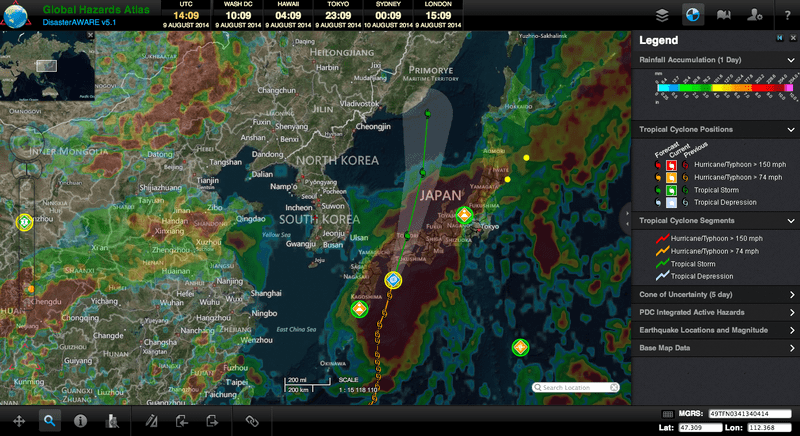In the western Pacific, slow moving Tropical Cyclone Halong (11W) made landfall as a downgraded tropical storm in Aki City on Japan’s main island of Shikoku early on Sunday, August 10 (local time). TC Halong has continued on a north northeastward track, according to the Joint Typhoon Warning Center (JTWC), unleashing record rainfall in Mie prefecture on Honshu Island. With concerns about rising rivers and potential flooding, the Japan Meteorological Agency (JMA) issued a rare “emergency weather warning” that triggered the evacuation of a half a million people.
After being downgraded to a tropical storm on August 9 (local time), Halong continues to weaken. However, the powerful storm system continues to generate heavy bands of rains, damaging winds, and threatens to trigger deadly landslides and flooding. Residents in affected areas are being urged to follow the instructions of local authorities for safe evacuations. Earlier in the week on Thursday, August 7, Halong side swiped Japan’s Daito Islands and passed just east of Okinawa, brinigng heavy rains and strong winds.
Unfortunately, the arrival of Halong comes at a time where Japan starts its annual Buddhist holiday week celebrating Obon that honors the spirits of ancestors. Authorities were forced to cancel hundreds of flights that stranded thousands of people in airports across the nation.
Last week, Halong passed over the Mariana Islands, causing minimal damage before developing into a super typhoon on August 4, which is the third super typhoon of 2014 in the Western Pacific Basin.
For more information on Tropical Cyclone Halong:
• Visit the Joint Typhoon Warning Center (JTWC) for the latest advisories,
• Read about Halong’s impacts last week to the Mariana Islands,
• Visit the Japan Meteorological Agency’s site,
• Take a look at more information from Weather Underground (WU), and
• Read an article by the New York Times on Halong.
More resources for hurricane safety and preparedness:
• Read about this year’s 2014 Central Pacific Basin Hurricane Season,
• Hawaii Hazards Awareness & Resilience Program (HHARP) to enhance community resilience,
• Read about how parents can help kids learn about disaster preparedness, and
• Find out about Hawaii’s Statewide Hurricane Preparedness Exercise.

